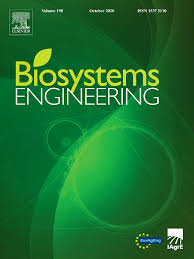Document type : Scientific article published in Biosystems Engineering
Authors: Günther Schauberger, Isabel Hennig-Pauka, Werner Zollitsch, Stefan J. Hörtenhuber, Johannes Baumgartner, Knut Niebuhr, Martin Piringer, Werner Knauder, Ivonne Anders, Konrad Andre, Martin Schönhart
Preview: Global warming has caused an increase in frequency and degree of heat stress over the last decades. In conventional livestock husbandry systems with insulated buildings, mechanical ventilation systems and high stocking density pigs and poultry can be more affected by climate change than in free range husbandry systems. To reduce heat stress in livestock buildings, adaptation measures are used. This article assesses a wide variety of adaptation measures including energy-saving air treatment systems, which cool the inlet air (e.g. cooling pads, earth-air-heat exchanger), the use of certain building elements (e.g., insulation), optimising building characteristics (e.g., spatial orientation), modification of the indoor climate at the animal level (e.g., fogging, cooling the drinking water, increasing air velocity), and adaptation of livestock management (e.g., reduction of stocking density). The efficacy of some of these measures was quantified using simulation models and then used as a benchmark for assessing the efficacy of other measures. The efficacy of the various adaptation measures varies widely: air treatment devices which are cooling the inlet air showed the highest performance, while measures aimed at reducing the heat release of the animals (e.g., lower animal density, higher ventilation rate) performed poorest. In confined livestock systems, the reduction of heat stress by implementing adaptation measures will reduce economical losses. The selection of appropriate adaptation measures, in addition to improving animal welfare, can also be seen as a contribution to strengthen the economic resilience of farmers.






